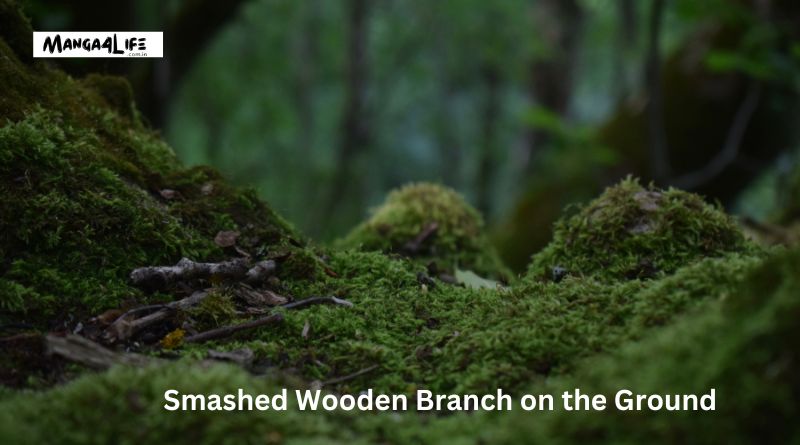Introduction
Nature’s elements tell stories that often go unnoticed. A smashed wooden branch on the ground might seem like a trivial sight, but it holds intricate narratives of weather, wildlife, and ecological processes. These branches serve as markers of past events and play a crucial role in the lifecycle of a forest. By examining the causes, significance, and ecological impact of such fallen branches, we can gain a deeper appreciation for the subtle but profound interactions within nature.
Causes of Smashed Wooden Branches
Natural Forces
The primary reason for branches breaking and falling to the ground is the influence of natural forces. High winds, storms, and heavy rainfall can weaken tree limbs, causing them to snap. Extreme weather events, such as hurricanes and tornadoes, are particularly destructive, leaving large amounts of debris, including smashed branches, in their wake. Prolonged drought can also weaken trees, making their branches more prone to breakage under pressure.
Additionally, snow and ice accumulation during winter can place excessive weight on tree limbs, leading to their collapse. In mountainous regions, avalanches can shear off branches, scattering them across the landscape.
Wildlife Activity
Wildlife interactions also contribute to the occurrence of smashed branches. Animals such as deer, bears, and larger birds may dislodge branches as they climb or forage. Insect infestations, particularly by species like termites or bark beetles, can weaken branches structurally, making them susceptible to breaking. Beavers, known for their tree-felling behavior, leave behind smashed branches as they construct dams and lodges.
Human Influence
Human activity, whether intentional or accidental, can result in smashed branches. Logging, land clearing, and urban development frequently disturb tree canopies. Improper pruning or tree cutting practices can also leave branches vulnerable to falling. In recreational areas, off-road vehicles and hiking activities may inadvertently contribute to the breaking of branches.
Ecological Significance of Fallen Branches
Habitat Creation
A smashed wooden branch on the ground provides an essential habitat for various species. Small mammals, insects, and reptiles use fallen branches as shelter or nesting sites. Decaying wood becomes a breeding ground for fungi and bacteria, which are vital for nutrient recycling in ecosystems. For instance, beetle larvae and termites play a significant role in breaking down wood into organic matter that enriches the soil.
Nutrient Recycling
As branches decompose, they release nutrients back into the soil, promoting plant growth. This natural process contributes to the forest’s nutrient cycle, ensuring that essential elements such as nitrogen, phosphorus, and potassium are returned to the ecosystem. Fungi, especially mycorrhizal species, form symbiotic relationships with tree roots, facilitating the transfer of nutrients from decaying wood to living plants.
Soil Stabilization
Fallen branches help stabilize the soil by reducing erosion. During heavy rainfall, these branches act as barriers, slowing down water flow and allowing the soil to absorb moisture. In forested areas, this process prevents landslides and maintains the integrity of the ecosystem.
Symbolism in Literature and Art
Throughout history, the image of a smashed wooden branch on the ground has been used metaphorically in literature and art. It often symbolizes broken dreams, resilience, or the passage of time. Poets and writers have drawn inspiration from the sight of fallen branches, weaving them into narratives that reflect human emotions and struggles. In visual arts, branches have been depicted as both fragile and enduring elements of nature, reminding viewers of the delicate balance in life.
Human Connection to Fallen Branches
Recreational Uses
Fallen branches often serve practical purposes for humans. In rural and outdoor settings, they are collected as firewood or used in building shelters. Artists and craft enthusiasts repurpose these branches into sculptures, furniture, or decorative pieces, giving them a second life.
Scientific Study
Ecologists and biologists study fallen branches to understand the health of forests and ecosystems. Analyzing the patterns of branch fall and decay provides insights into tree growth, disease prevalence, and environmental stressors. This research is crucial for conservation efforts and sustainable forest management.
How to Interpret a Fallen Branch
When encountering a smashed wooden branch on the ground, one can analyze its condition to infer the events that led to its fall. The texture and coloration of the wood can indicate the presence of rot or insect damage. Clean breaks often suggest mechanical forces like wind, while jagged edges might point to animal activity. The surrounding environment, such as soil moisture and nearby vegetation, provides additional context.
Preventing Unnecessary Branch Damage
Tree Maintenance
Proper care and maintenance of trees in urban and rural settings can prevent unnecessary branch breakage. Regular pruning helps remove weak or dead branches that pose a risk of falling. Ensuring adequate watering and fertilization can improve tree health, making branches more resilient to external forces.
Awareness in Recreational Activities
Promoting responsible outdoor activities can minimize human-induced damage to trees. Educating hikers, campers, and off-road vehicle users about the ecological importance of trees and fallen branches encourages preservation efforts. Designing trails and recreational areas with minimal impact on vegetation helps reduce branch breakage.
Conclusion
A smashed wooden branch on the ground may seem insignificant, but it holds immense ecological, symbolic, and practical value. From supporting wildlife to inspiring human creativity, these fallen fragments of trees are vital components of nature’s intricate web. By understanding and appreciating the stories they tell, we can foster a deeper connection with the natural world and contribute to its preservation.

